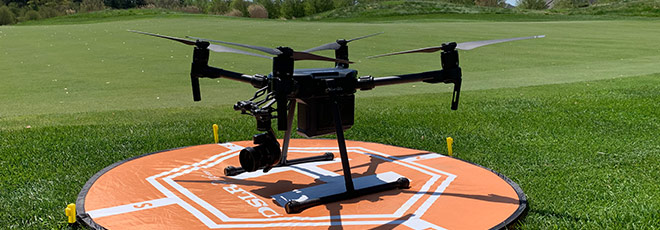Drones are Everywhere! Or are They?
A quick review of FAA rules and regulations on commercial drones to prepare you for your next project.
These days everyone seems to be talking about drones; they own a drone; they know someone who owns a drone; someone they know-knows someone who has flown a drone. It seems as though they are everywhere and can be flown anywhere!
With the advancement of supporting technology including cameras, gimbals, global positioning systems (gps), and processing software, drones have become practical to use in nearly all commercial industries. Cameras and gimbals on drones allow for movie production quality video. Photogrammetry, gps, and processing software produce scaled engineering diagrams with relative accuracies of a few centimeters. Thermal and lidar imagery allow emergency responders and farmers to find and observe features that are difficult or impossible to see with standard photogrammetry or on the ground. With all these applications, drones really do appear to be everywhere.
However, this technology does not come without regulation. Understanding the Federal Aviation Administration (FAA) regulations on drones is critical when using this technology regardless of the industry.
The following are some general rules and regulations from FAA Part 107 designating the conditions and locations drones can and cannot fly. Keep in mind that you will need to register your drone and obtain a license if you want to fly commercially. Waivers may be acquired for nearly all these rules and regulations.

- Understanding Controlled Airspace Limitations. Before flying anywhere, you need to determine whether your flight location is designated as controlled or uncontrolled airspace. This requires an understanding of sectional charts and controlled airspace classifications. Sectional charts contain information on airspace classifications and can be found on several websites including VFRMap.com, SkyVector.com, and My Pilot Store. In addition to sectional charts, there are many great mobile apps available that provide information regarding airspace designations. Airmap, Kittyhawk, and Skyward are just a few of these apps. Flying within controlled airspace requires authorization from the FAA. You can submit requests for authorization to fly in controlled airspace near airports using Low Altitude Authorization and Notification Capability (LAANC) or DroneZone. The FAA’s website provides detailed information about these services.
- The maximum altitude limit is 400 ft above ground level. Some exceptions do exist. For instance, if the purpose of your flight is to inspect a tower or feature that is greater than 400 ft, this limit does not apply as long as you stay within 400 ft (vertically or horizontally) of the tower or feature you are inspecting. Be aware at higher elevations you may enter controlled air space.
- The maximum speed limit is 100 miles per hour (groundspeed) or 87 knots. There are several racing drones that can exceed 100 miles per hour. For most industries though, this speed limit will not be an issue.
- The drone operator must always maintain an unaided visual line of sight to the drone. Unaided refers to the fact that you must be able to see the drone without use of binoculars (glasses and contacts are fine). Looking through a first-person view screen does not count as an exception to this rule. Brief moments where the visual line of sight is broken are okay if you are moving around or behind an obstruction and the drone can quickly be maneuvered back into visual line of sight.
- Drones must be operated during the day. Or more specifically, drones may not be flown before morning civil twilight or after evening civil twilight. In the contiguous United States, morning civil twilight is 30 minutes prior to official sunrise and evening civil twilight is 30 minutes after official sunset. You can fly within these 30 minutes civil twilight periods without a waiver, but only if your drone is equipped with anti-collision lights that are visible for up to three statute miles.
- Cloud clearance must be at least 500 ft below the clouds and at least 2000 ft horizontally from clouds. For clarification, this applies only when you are flying directly below a cloud or at the same altitude as clouds. If clouds are off in the distance and you are not flying below them, you do not need to stay 500 ft below the cloud. The 2000 ft horizontal distance applies to when you are operating at the same altitude as the clouds. In this case, you would want to keep your drone 2000 ft from the clouds.
- Operating a drone from a moving vehicle: Under no circumstances can you operate a drone from a moving aircraft. However, you may operate a drone from a land or waterborne vehicle in sparsely populated areas.
- Flying over people or moving vehicles: Drones may not be flown over any part of a person who is not directly participating in drone flight operations unless they are under safe cover that would prevent injury should the drone, or part of the drone, fall from the air. FAA regulations specify that a drone may fly over a stationary vehicle but not over moving vehicles.
Again, there are waivers to many of these rules, so if your job requires flight operations that do not comply with these restrictions, no need to worry. The FAA website provides detailed information on operations that require waivers and how to obtain them.

